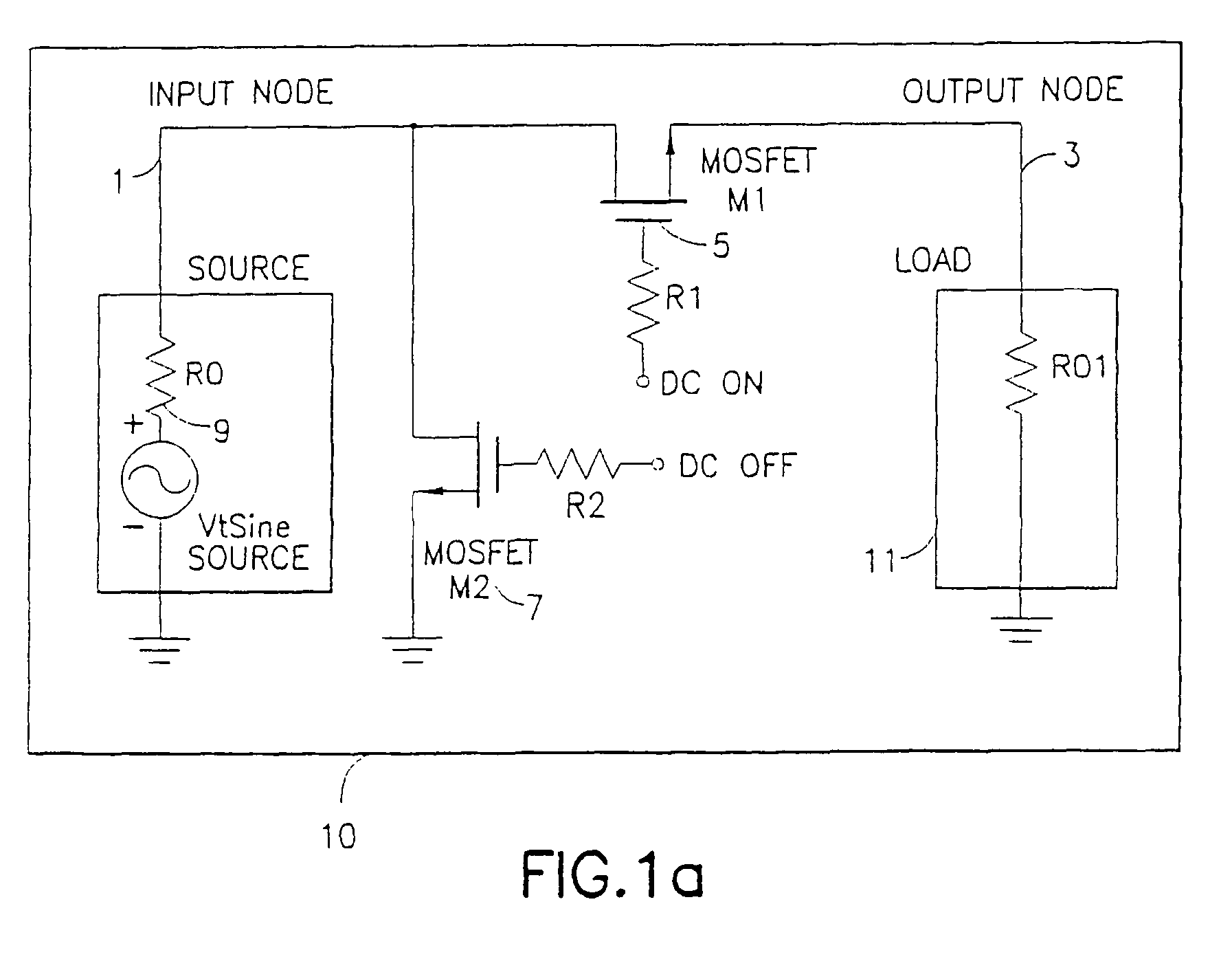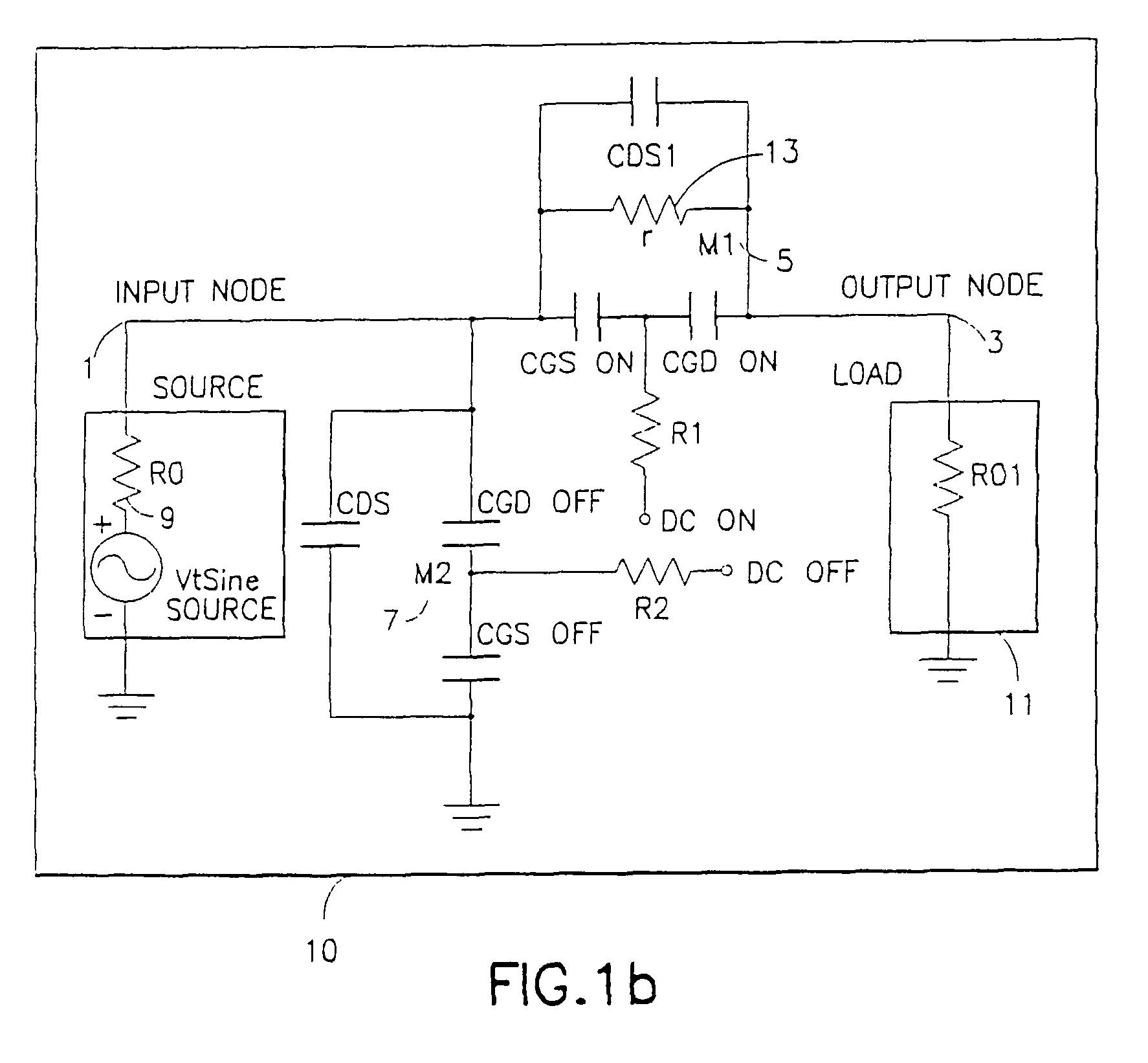Symmetrically and asymmetrically stacked transistor group RF switch
a transistor group and stacked technology, applied in the field of switches, can solve the problems of first type of compression, undesirable input signal feedthrough, loss of power, etc., and achieve the effect of improving rf switch design, vastly reducing the ic area required for rf switch implementation, and high area efficiency
- Summary
- Abstract
- Description
- Claims
- Application Information
AI Technical Summary
Benefits of technology
Problems solved by technology
Method used
Image
Examples
first embodiment
Negative Voltage Generator-Charge Pump—A First Embodiment
[0079]As shown in FIG. 4, one embodiment of the fully integrated RF switch 100 includes a negative voltage generator or charge pump 120. The negative voltage generator 120 generates the negative power supply voltage (specified hereafter as “−Vdd”) required by other circuits of the fully integrated RF switch 100. Two sets of inputs are provided to the negative voltage generator 120: a positive DC power supply voltage signal (Vdd) 122; and a clocking input (shown in the figure as a single input signal, “Clk”) 124. Although the clocking input 124 is shown as a single input signal in FIG. 4, as described below with reference to FIG. 5b, in some embodiments of the present inventive RF switch, the clocking input 124 may comprise two or more clock input signals.
[0080]In addition, in the embodiment shown in FIG. 4, the positive supply voltage that is input to the negative voltage generator circuit 120 comprises a 3 VDC power supply. H...
PUM
 Login to View More
Login to View More Abstract
Description
Claims
Application Information
 Login to View More
Login to View More - R&D
- Intellectual Property
- Life Sciences
- Materials
- Tech Scout
- Unparalleled Data Quality
- Higher Quality Content
- 60% Fewer Hallucinations
Browse by: Latest US Patents, China's latest patents, Technical Efficacy Thesaurus, Application Domain, Technology Topic, Popular Technical Reports.
© 2025 PatSnap. All rights reserved.Legal|Privacy policy|Modern Slavery Act Transparency Statement|Sitemap|About US| Contact US: help@patsnap.com



